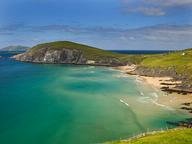Quiz Answer Key and Fun Facts
1. There is actually a point called simply "Point," specifically a peninsula connected by an isthmus to the Isle of Lewis. If that doesn't pinpoint Point for you, it might help to know that Point is very near the regional capital of Stornoway. Still lost? The whole area comprises the most populous region of the Western Isles or Outer Hebrides, which is an archipelago of what considerably-more-famous country?
2. Although not the southernmost location in South America, Punta Arenas (Sandy Point), Chile, is a busy port and the most populous city south of the 46th south parallel. It began as a penal colony in 1848, but quickly grew in size and prominence due to its location on what body of water?
3. Gay Head is a place that has special meaning to the Wampanoag Tribe of North America. In their lore the place was formed by Moshup, a giant who was one of their forebears. Where is Gay Head located?
4. A dauntingly remote location, Zenith Point is the northernmost spot on the North American mainland. Located on the Murchison Promontory, which itself is a northern extension of the Boothia Peninsula in the Canadian Arctic, Zenith Point sits on the south shore of the Bellot Strait, a key transit route of the Canadian Northwest Passage. These places are all part of which largest and newest Canadian territory?
5. Located in an island group, The Bluff's notable features may give a clue to its location (that's its full name - The Bluff): 1) while the terrain in these islands is almost entirely flat, The Bluff's altitude of over 140 ft. makes it easily their highest point; 2) it may not be surprising that the islands are known for excellent SCUBA diving; however, The Bluff has also made rock climbing an increasingly-important tourist attraction there; and 3) the Gaelic word for "bluff" is "brac." Based on these facts about The Bluff, can you identify the islands that are its home?
6. Punta de Tarifa, Spain, is the southernmost point of the Iberian Peninsula and thus of continental Europe. It is situated on the Atlantic side of which famous waterway?
7. Eaglehawk Neck is an isthmus that connects the northern Tasman Peninsula to the island of Tasmania, a state in the Commonwealth of Australia. Very small, The Neck, as it is locally known, is barely 1200 feet long in total and less than 100 feet wide at its most narrow point. Today it's a popular vacation spot featuring surfing, SCUBA diving, fishing, and hiking among picturesque geological formations. However, in the 19th century The Neck played a very different and important role in the history of what Australian World Heritage location?
8. Which of these capes actually exists in nature?
9. What area is called the "land nearest nowhere" because it is the nearest land to a place in the ocean that lies at 0 degrees latitude, 0 degrees longitude, and 0 degrees altitude?
10. What does Merriam-Webster define as "a bend in a coast forming an open bay; a bay formed by such a bend"? This feature may be considered the opposite of "point," and therefore, beside the point.
Source: Author
shorthumbz
This quiz was reviewed by FunTrivia editor
spanishliz before going online.
Any errors found in FunTrivia content are routinely corrected through our feedback system.
